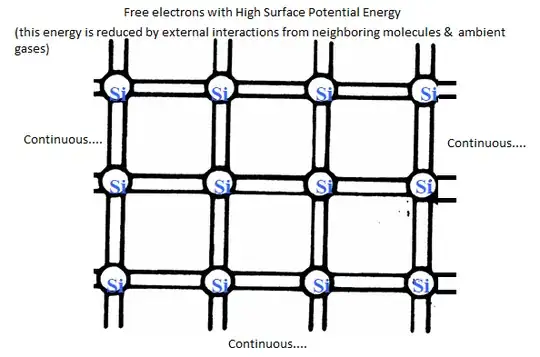They do, as Feynman said. If you have two copper pieces perfectly polished and you put them in contact, they will weld automatically (the copper atoms won't know what piece they belonged to).
But in real life, oils, oxides and other impurities don't allow this process.
Found it! Read Feynman's own words (where $\mu$ = coefficient of friction):
If
we try to get absolutely pure
copper, if we clean and polish the
surfaces, outgas the materials in a
vacuum, and take every conceivable
precaution, we still do not get $\mu$.
For if we tilt the apparatus even to
a vertical position, the slider will
not fall off—the two pieces of
copper stick together! The
coefficient $\mu$ , which is ordinarily
less than unity for reasonably hard
surfaces, becomes several times
unity! The reason for this
unexpected behavior is that when
the atoms in contact are all of the
same kind, there is no way for the
atoms to “know” that they are in
different pieces of copper. When
there are other atoms, in the oxides
and greases and more complicated
thin surface layers of contaminants
in between, the atoms “know”
when they are not on the same
part. When we consider that it is
forces between atoms that hold the
copper together as a solid, it should
become clear that it is impossible to
get the right coefficient of friction
for pure metals.
The same phenomenon can be
observed in a simple home-made
experiment with a flat glass plate
and a glass tumbler. If the tumbler
is placed on the plate and pulled
along with a loop of string, it slides
fairly well and one can feel the
coefficient of friction; it is a little
irregular, but it is a coefficient. If
we now wet the glass plate and the
bottom of the tumbler and pull
again, we find that it binds, and if
we look closely we shall find
scratches, because the water is able
to lift the grease and the other
contaminants off the surface, and
then we really have a glass-to-glass
contact; this contact is so good that
it holds tight and resists separation
so much that the glass is torn apart;
that is, it makes scratches.
Source: http://www.feynmanlectures.caltech.edu/I_12.html
